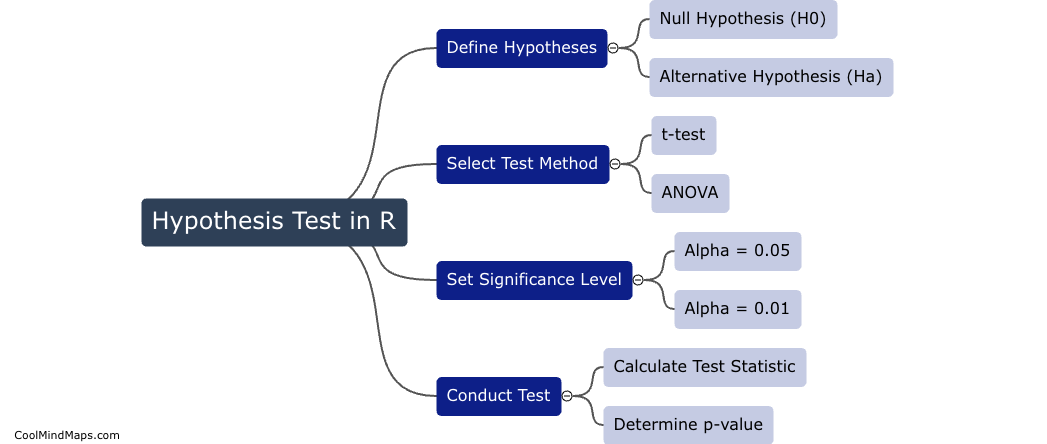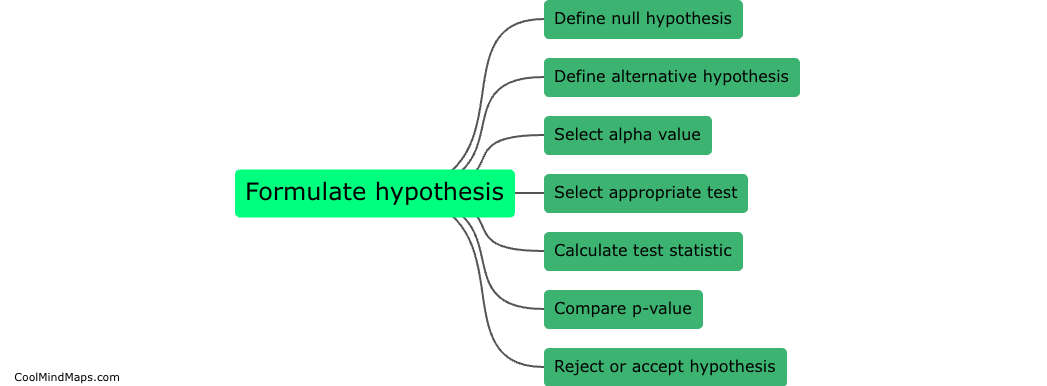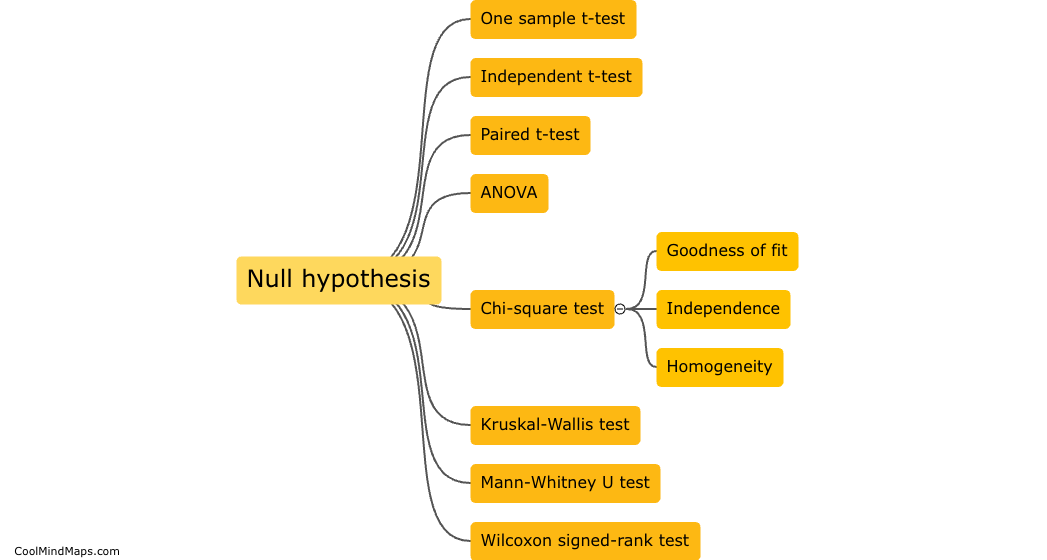How is a hypothesis test conducted in R?
In R, a hypothesis test is typically conducted by using a statistical test function, such as t.test() for testing hypotheses about means or prop.test() for testing hypotheses about proportions. First, the data is loaded into R and a null hypothesis is formulated. Then, the test function is applied to the data, providing a test statistic, p-value, and possibly a confidence interval. The results are interpreted to determine whether there is enough evidence to reject the null hypothesis in favor of the alternative hypothesis. Additional statistical measures and visualizations can also be used to support the results of the hypothesis test.

This mind map was published on 15 May 2024 and has been viewed 89 times.











